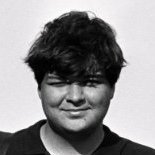
Gautam Valluri
Basic Member-
Posts
220 -
Joined
-
Last visited
About Gautam Valluri
- Birthday 04/14/1985
Profile Information
-
Occupation
Director
-
Location
Paris
Contact Methods
-
Website URL
http://www.gautamvalluri.com
Recent Profile Visitors
-
New Bond film to be directed by Denis Villeneuve
Gautam Valluri replied to Stephen Perera's topic in General Discussion
Stephen, Rogue One was shot on the Arri Alexa 65. -
New Bond film to be directed by Denis Villeneuve
Gautam Valluri replied to Stephen Perera's topic in General Discussion
Skyfall was the only Bond film shot digitally (by Deakins). I believe Van Hoytema shot some Spectre sequences on the Arri Alexa (the one-take opening sequence). No Time To Die AFAIK was purely film, knowing Sandgren's preferences. I think the last Villeneuve film shot on film was Prisoners. And taking into account that Amazon is a digital streaming platform, it looks highly unlikely that it will be shot on film. In any case, the filming format is not important. Villeneuve and Amazon are not the right forces to be making a next-generation Bond. The Craig-era was already too self-serious and joyless. Villeneuve's male protagonists are too soft-spoken, low-energy and passive. I fear that this version of Bond will be geared towards young adults, where cool gadgets and action sequences become front and center, and a villain who's nothing more than a living sculpture in a ridiculously high-ceiling environment. My favourite Bond films have all been directed by non-auteur/ workmen directors getting things done, much like Bond does himself. People forget that Bond is an employee doing his job. I would've gone with a director like Kenneth Branagh or Edward Berger (the Conclave guy). They have an non-obtrusive, invisible style of directing. With Branagh, he might even play the villain or M so even better. -
Goodbye remjet, hello AHU?!
Gautam Valluri replied to Joerg Polzfusz's topic in Film Stocks & Processing
Is it still ECN2 if the remjet removal step is skipped? No wonder the Cinestill images were always a little "off" on their colours. -
Goodbye remjet, hello AHU?!
Gautam Valluri replied to Joerg Polzfusz's topic in Film Stocks & Processing
@Aapo Lettinen do you happen to have any example stills of what the "ghost reflections" look like on these chrome pressure-plates when shot without the remjet layer? -
Goodbye remjet, hello AHU?!
Gautam Valluri replied to Joerg Polzfusz's topic in Film Stocks & Processing
Looks like bleach bypass on the new negatives will be tricky nigh pointless. Interesting that Spielberg & Kaminski are testing these stocks on their new film. Kaminski always does bleach bypass on the negs right? -
Goodbye remjet, hello AHU?!
Gautam Valluri replied to Joerg Polzfusz's topic in Film Stocks & Processing
I got hold a copy of this document from Kodak for anyone interested. AHU_FilmMaker Talking points_05-20-25_Final[41][92][65].pdf -
Goodbye remjet, hello AHU?!
Gautam Valluri replied to Joerg Polzfusz's topic in Film Stocks & Processing
Any other issues to be expected from the removal of the remjet layer? For example, there have been many discussions here about how some chrome-plated pressure plates in some Aatons and Arriflex cameras have presented issues with B&W Double-X film. Will this be an issue with this proposed non-remjet colour stocks? -
Film Development and Scanning in Europe
Gautam Valluri replied to Kevin Staub's topic in Post Production
Where in Europe? There are great labs everywhere. I personally recommend Dejonghe (Kortrijk, Belgium) and Andec Cinegrell (Berlin). There is also a vast network of artist-run film labs where you can develop your own film: www.filmlabs.org -
As with every year, IndieWire covers the cameras and lenses used in the films features at this year's Cannes film festival: https://www.indiewire.com/gallery/cannes-2025-cinematography-cameras-arri-alexa-35/amrum/ Linklater and his DP apparently used an Arri 2C to film the 35mm sections of Nouvelle Vague. The film also features the Cameflex, the one that Jean Painlevé loaned to Godard to shoot Breathless. Although its used only as a prop in Linklater's film. Back in 2018-19, I used to work in Film Restoration at the Panlevé archives and there was his Cameflex stored in the downstairs storage area. My boss claimed that it was the one that was used on Breathless. There was no way to verify that claim though.
-
Which labs do E-6 development for 35mm film?
Gautam Valluri replied to Owen A. Davies's topic in Film Stocks & Processing
As far as I know, they cross-processed the Ektachrome in ECN2.- 8 replies
-
- 1
-

-
- development
- laboratory
-
(and 2 more)
Tagged with:
-
K3 Needs CLA - Looking For European Technician
Gautam Valluri replied to Willem Jansen's topic in Russian Gear
Here's a list of technicians on the FIlmlabs.org website. No one specifically does CLA for K3s but it might be worth checking with them: https://www.filmlabs.org/technical-section/providers/where-to-have-film-cameras-repaired/





